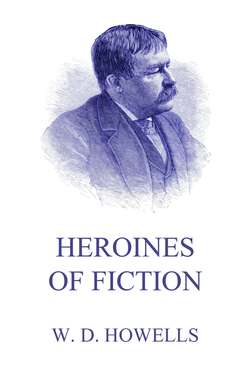Читать книгу Heroines Of Fiction - William Dean Howells - Страница 25
На сайте Литреса книга снята с продажи.
IV
ОглавлениеOne of the things that Jane Austen was first in was the personal description of her heroines. Almost to her time the appearance of the different characters was left to the reader's imagination; it is only in the modern novel that the author seems to feel it his duty to tell how his people look. We have seen how meagerly and formally the heroines of " The Vicar of Wakefield " are presented. In "Sir Charles Grandison," there is a great pretense of describing the beauty of Harriet Byron, but the image given is vague and conventional. So far as I recall them, the looks of Fanny Burney's and Maria Edgeworth's heroines are left to the reader's liking; and I do not remember any portrait even of Elizabeth Bennet in " Pride and Prejudice." It is in her later stories that Jane Austen offers this proof of modernity among so many other proofs of it, and tells us how her girls appeared to her. She tells us not very elaborately, to be sure, though in the case of Emma Woodhouse, in "Emma," the picture is quite finished. In" Persuasion" Anne Eliot is slightly sketched; and we must be content with the fact that she had " mild dark eyes and delicate features," and that at the time we are introduced to her she fully looked her twenty-seven years. But this is a good deal better than nothing, and in "Northanger Abbey" Catharine Morland is still more tangibly presented. " The Morlands . . . were in general very plain, and Catharine was, for many years of her life, as plain as any. She had a thin, awkward figure, a sallow skin without color, dark lank hair, and strong features. ... At fifteen, appearances were mending. . . . Her complexion improved, her features were softened by plumpness and color, her eyes gained more animation, and her figure more consequence." At seventeen, when we make her acquaintance, her manners were " just removed from the awkwardness and shyness of a girl; her person pleasing, and when in good looks, pretty."
These particulars are from that delightful first chapter where the character as well as the person of the heroine is studied with the playful irony in which the whole story is conceived. From the beginning we know that it is a comedy the author has in hand; and we lose sight of her obvious purpose of satirizing the Radcliffe school of romance in our delight with the character of the heroine and her adventures in Bath and at Northanger Abbey. Catharine Morland is a goose, but a very engaging goose, and a goose you must respect for her sincerity, her high principles, her generous trust of others, and her patience under trials that would be great for much stronger heads. It is no wonder that the accomplished Henry Tilney falls in love with her when he finds that she is already a little in love with him; and when his father brutally sends her home from the Abbey where he has pressed her to visit his daughter on the belief that she is rich and will be a good match for his son, it is no wonder that Tilney follows her and offers himself to her. She prevails by her innocence and sweetness, and in spite of her romantic folly she has so much good heart that it serves her in place of good sense.
